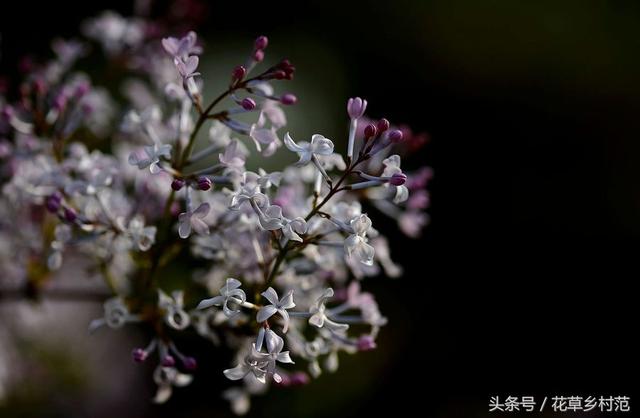Planting and maintenance of lilac

Morphological features: up to 4m high 5m. Bark dark gray or grayish brown, panicles, flowers dark purple, fragrant. It blossoms from April to May. In a broad sense, cloves refer to all the species of the genus Syringa, of which 30 species have been recorded and 24 species in China. There are also many varieties, hybrids and varieties. A variety of white lilacs with white flowers.

Growth habits: like light. Slightly resistant to shade, weak growth in shade or semi-shade, sparse flowering. Like warm, moist, have a certain degree of cold resistance and strong drought resistance. Lax requirements for soil, resistance to barren, like fertile, well-drained soil, stagnant water will cause disease, until the death of the whole plant.

Maintenance measures: (1) lilac flowers should be transplanted before budding in early spring. In the transplanting hole, we should first apply sufficient base fertilizer, cover the base fertilizer with a layer of soil, and then put the seedling slope soil. Water once after planting. After that, you can survive by watering 2mi water three times. Cloves have strong adaptability and extensive management. usually, as long as we pay attention to weeding, waterlogging in rainy season and watering in drought, we can grow smoothly.
(2) cloves do not like to be too fat. Do not fertilize too much, so as not to cause branches to grow and affect flowering. It is generally possible to apply rotten compost once a year or every other year before winter.
(3) before sprouting in the middle of March. Cloves should be reshaped and pruned, cutting off dense branches, thin and weak branches, disease and insect branches, and cutting long branches in the middle to make the canopy ventilated and transparent. If there is no seed left after the flower fade, the residual flower together with the two buds in the lower part of the flower ear can be cut off to reduce nutrient consumption and promote new techniques and shapes.
Into a flower bud. After the fallen leaves, you can also do a trick to keep the crown beautiful.
(4) generally, the methods of sowing and plant division are used to propagate.

Warm dew hint: suitable for potted clove varieties are small leaf cloves, flower and leaf cloves and assorted cloves.
- Prev

Planting method and nutritional value of raspberry
Raspberries are perennial shrubs. It belongs to clumps, and its branches grow obliquely or lie long for life, generally 3-4 meters long. Its fruit is a berry, and the fruit.
- Next

How to grow white radish?
White radish belongs to the genus radish of Cruciferae, which is a common rhizome vegetable in daily life. White radish has fine meat, sweet and succulent taste, rich nutrition and edible.
Related
- Fuxing push coffee new agricultural production and marketing class: lack of small-scale processing plants
- Jujube rice field leisure farm deep ploughing Yilan for five years to create a space for organic food and play
- Nongyu Farm-A trial of organic papaya for brave women with advanced technology
- Four points for attention in the prevention and control of diseases and insect pests of edible fungi
- How to add nutrient solution to Edible Fungi
- Is there any good way to control edible fungus mites?
- Open Inoculation Technology of Edible Fungi
- Is there any clever way to use fertilizer for edible fungus in winter?
- What agents are used to kill the pathogens of edible fungi in the mushroom shed?
- Rapid drying of Edible Fungi

